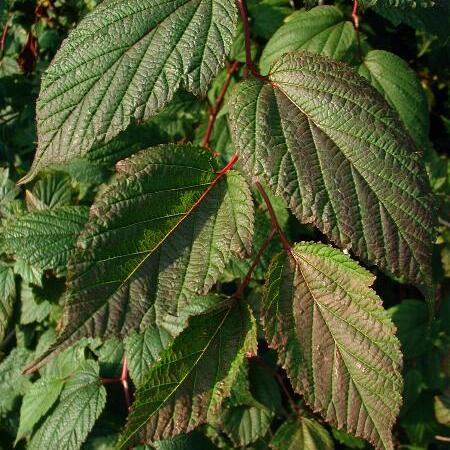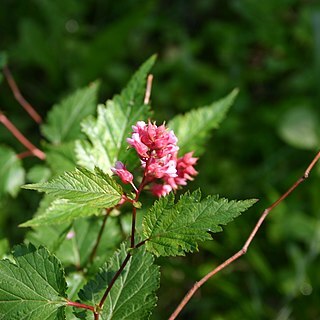Shrubs, rarely subshrubs, deciduous. Branchlets spreading, slender, terete or angled; buds ovoid, scales imbricate, apex acute. Leaves often 2-ranked; stipules conspicuous, deciduous; leaf blade simple, margin doubly serrate and usually 3-parted or shallowly 3–5(–7)-lobed. Inflorescence a terminal or sometimes axillary raceme or panicle; bracts linear-lanceolate to ovate, small, caducous. Flowers bisexual. Hypanthium campanulate, urceolate-campanulate, or cylindric. Sepals 5, erect, persistent in fruit and becoming densely pubescent and stipitate glandular abaxially. Petals white or pink-red, subequaling sepals. Stamens 10–30, irregularly 2-whorled on rim of hypanthium, not exceeding petals. Carpels 1(–5); ovary with 2–10 ovules; style erect. Follicles enclosed by persistent hypanthium, dehiscent along adaxial suture. Seeds several, obovoid; testa lustrous; caruncle convex.
Unarmed shrubs, erect, scandent, or creeping. Leaves simple, lobed and dentate. Stipules free. Flowers in terminal racemes or panicles, 5-merous, bisexual. Hypanthium cam-panulate to tubular, often with stalked glands outside. Sepals imbricate, acuminate. Petals (sub)orbicular, white. Stamens 6-40. Pistil 1, rarely 2, free; ovary superior, included in hypanthium, 1-locular; style terminal, with peltate stigma; ovules 2-13, biseriately placed on the ventral placenta. Fruit a dry follicle, protruding from the enlarged hypanthium. Seeds several, with hard and shining testa; endosperm rather plentiful.


